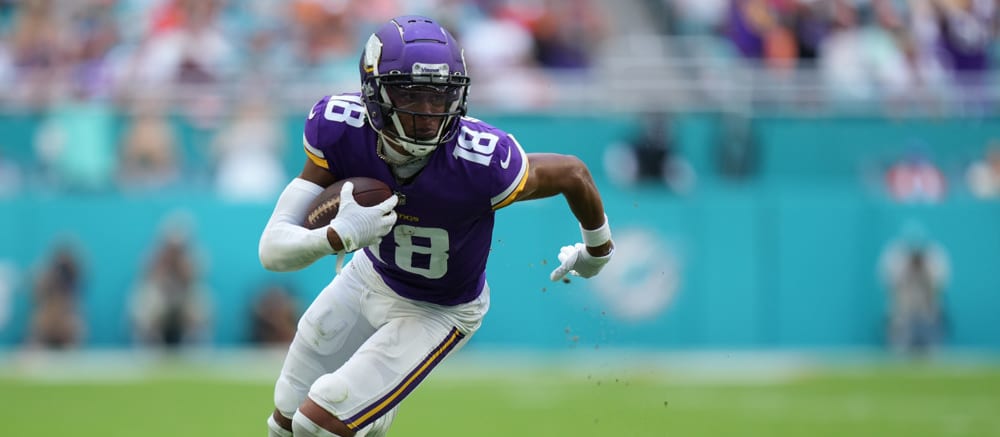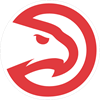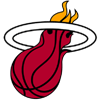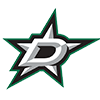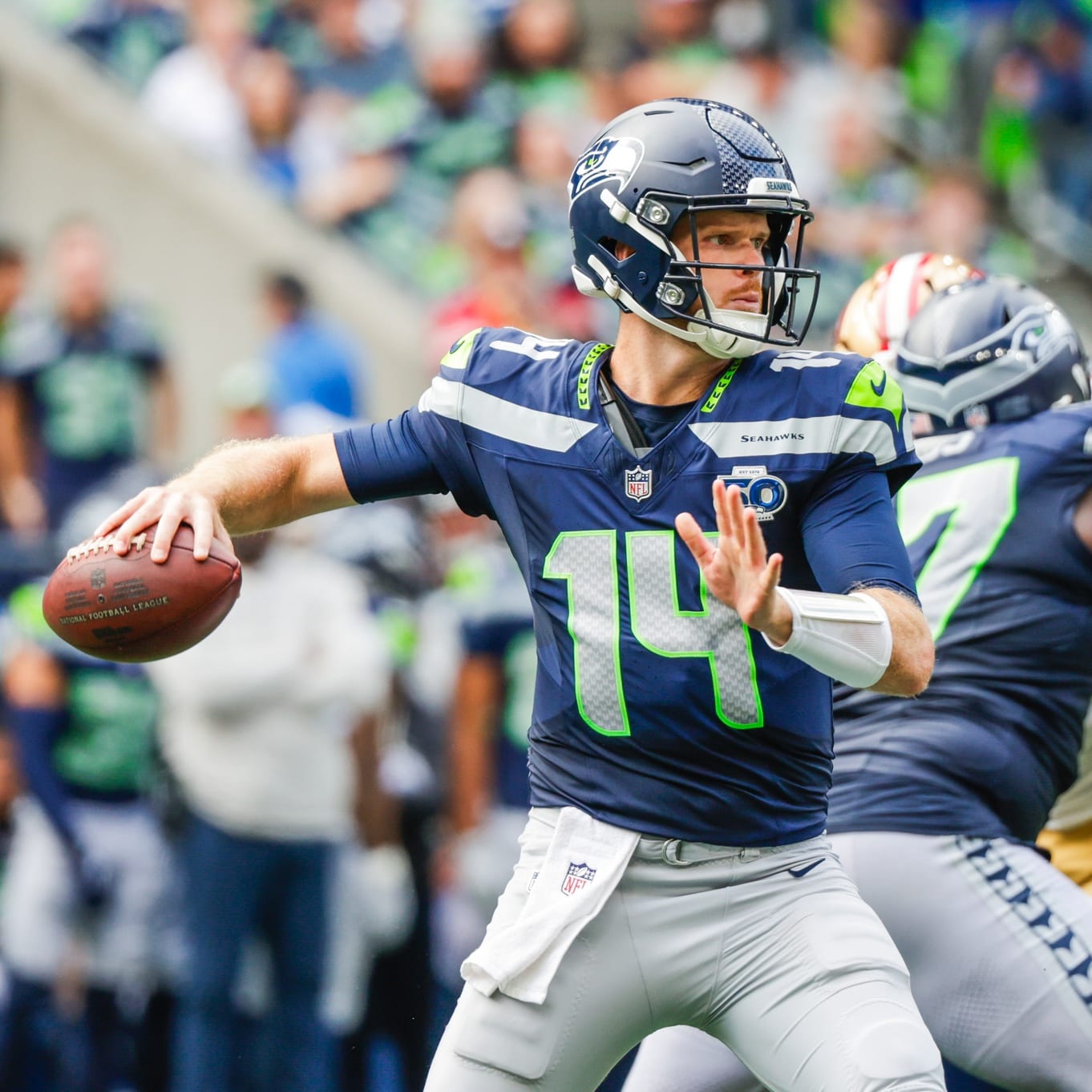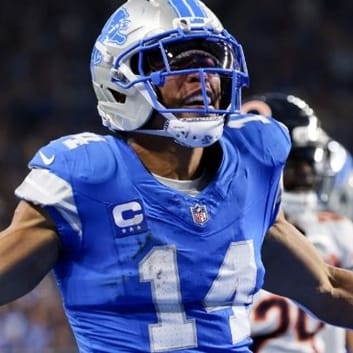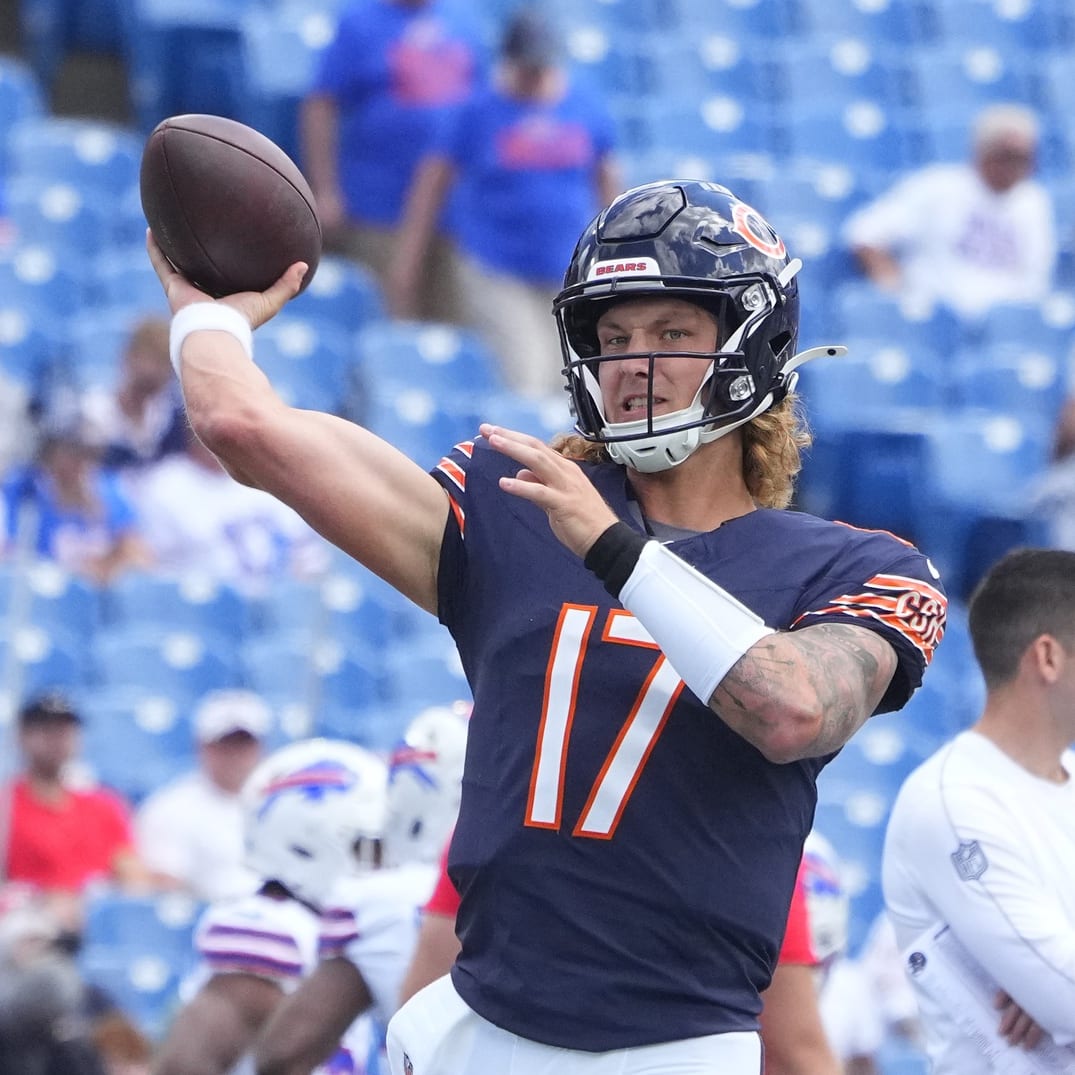Despite all the debates about what draft strategy is most correct, the boring answer is that there are a variety of ways to draft a fantasy football team effectively. Whether a strategy works for your draft likely depends on at least a few additional details: the size of the league, the number of starting positions, bench size, the scoring system. Another important variable is the question of where you're actually drafting from in the selection order.
Some strategies work better in some situations than others, though, and this article series means to take a look at what strategies might work best for a given draft slot range. We know our task is to more or less "pick the right players," but the players we can pick is somewhat determined by where our draft picks rest in the draft order.
This article will assess the situation for picks 1 through 3. After mapping out a general early-round strategy, there will follow a section that addresses general positional budgeting.
EARLY ROUND STRATEGY
First Round
The top three players in the mainstream ADP are fairly clear at the moment: Justin Jefferson (1), Ja'Marr Chase (2) and Christian McCaffrey (3) are the consensus first three picks, in that order.
You are certainly not obligated to take any of them if you are given a top-three pick, but there's a pretty good case for why each goes where they tend to. Jefferson and Chase are the favorites to win the league receiving title, and the
Despite all the debates about what draft strategy is most correct, the boring answer is that there are a variety of ways to draft a fantasy football team effectively. Whether a strategy works for your draft likely depends on at least a few additional details: the size of the league, the number of starting positions, bench size, the scoring system. Another important variable is the question of where you're actually drafting from in the selection order.
Some strategies work better in some situations than others, though, and this article series means to take a look at what strategies might work best for a given draft slot range. We know our task is to more or less "pick the right players," but the players we can pick is somewhat determined by where our draft picks rest in the draft order.
This article will assess the situation for picks 1 through 3. After mapping out a general early-round strategy, there will follow a section that addresses general positional budgeting.
EARLY ROUND STRATEGY
First Round
The top three players in the mainstream ADP are fairly clear at the moment: Justin Jefferson (1), Ja'Marr Chase (2) and Christian McCaffrey (3) are the consensus first three picks, in that order.
You are certainly not obligated to take any of them if you are given a top-three pick, but there's a pretty good case for why each goes where they tend to. Jefferson and Chase are the favorites to win the league receiving title, and the legend of McCaffrey needs no elaboration. That said, Cooper Kupp, Tyreek Hill and Travis Kelce also reside in the consensus top six, so it's not unusual at all for any of those three to go in the first three picks. Pretty much anything is permitted — what's arguably more important than which player you select first is the question of whether you draft an effective supporting cast for that player.
In other words, your choice between Jefferson and Chase — or even Kupp and Hill — might not dictate your season's outcome as much as whether you target the right positions at the right time from that point. All four are great receivers capable of finishing as the WR1, but even if you pick the correct WR1 your work can still be undone if you take on water in the subsequent rounds. To handle that question correctly depends on at least a few other things — the number of positions you start (two WR or three?), the scoring system (PPR? 0.5PPR? Standard? Six points per passing touchdown or four? TE premium?) and the number of teams in the league.
Leagues with full-point PPR encourage more prioritization of the WR position and penalizes "rushing specialist" running backs to the benefit of "pass-catching" running backs. Six points per passing touchdown devalues run-dependent quarterbacks or/and places a premium on QBs with league-leading passing touchdown production. In TE premium leagues – a league where tight ends get two points per catch, or a league where you start two tight ends — Kelce is often or usually the first overall pick.
Of course, in Superflex or 2QB leagues the entire market shifts to desperate race to pick quarterbacks first. In such formats it's not unusual to see players like Jefferson nearly fall out of the first round, and players like Kupp and Hill fall out of first-round range almost always. For these leagues you can disregard the mainstream ADP, which presupposes a 1QB format. In Superflex or 2QB leagues the quarterbacks will go exactly as fast as you fear they will, or even faster. In my Scott Fish Bowl draft — a Superflex and TE-premium format — eight quarterbacks went in the first 12 picks, and 15 in the first 40 picks.
It's also worth keeping in mind what your specific league goals are: is this a one-off league, or one that's part of a tournament structure with coveted top prizes for those who finish at the top of a large field of contestants? The higher you need to finish and the bigger the field, the more you should be risk-curious rather than risk-averse, but for more casual leagues there is more room for conventional thinking.
Rounds 2-5
Assuming your league starts 3WR and features either PPR or 0.5PPR scoring, you'll likely want to exit the first five rounds with at least two wide receivers and more likely three. Or at least, an approach like that would be one of the less risky strategies. A person could draft two running backs in the first two rounds and then a quarterback or Mark Andrews in the third — theoretically in pursuit of runaway RB production and a top-two return at TE — but that person would need to be both smart and lucky to accumulate the necessary WR ammo from that point.
Another thing to consider is whether you are in a weekly start league or a best-ball format. In best ball it's easier to use a Swarm strategy at a position, accumulating quantity more than quality, because the format starts your highest-scoring combination of players each week automatically. In season-long leagues with weekly lineup decisions, it can be a real headache to have to pick three players from a group of six or seven mostly-equal alternatives. Football can be fluky, and it's easy to guess wrong when choosing between many equally capable players at receiver. One advantage of locking up three standout wide receivers early in season-long leagues is that it saves you the burden of making a correct series of choices each week — if you draft three receivers in the first five rounds, those three will always start for you. Not just that, but if you field a strong starting three at WR then you can save bench spots for hoarding backup running backs — often the players who end up costing entire FAAB budgets when the starting running back on their team gets hurt. Getting tomorrow's big FAAB pickup on your bench for today for free is a huge boon to a fantasy roster.
If you selected a WR first: Your strategy after the first round remains fairly open. You have the option to pursue another WR next, but you're not under as much pressure to do so as someone who took a running back or Kelce in the first. Your second pick (1 → 22, 2 → 23, 3 → 24) lands in a range of the ADP where you should have viable options at all positions but tight end, where Mark Andrews doesn't tend to go until the third round.
To target a quarterback with this pick would arguably be somewhat risky compared to an RB or WR, but if you want one of Patrick Mahomes, Josh Allen or Jalen Hurts the fact is this might where you would need to take them, even in 1QB leagues. While any of the three sometimes falls to the third round, it's not a common occurrence. To take this plunge, in my opinion, makes the most sense (A) in tournament contests and (B) when you're pairing that quarterback with a pass catcher from the same team. In other words, if I take Josh Allen in the second round it's probably because I took Stefon Diggs in the first round. If Hurts in the second then A.J. Brown in the first. This is to say that I probably wouldn't take Patrick Mahomes in the second round if I had taken a wide receiver in the first, because the only first-round pairing option with Mahomes is Kelce.
If you selected Kelce first: Taking Kelce in the first does not at all obligate anyone to target Mahomes in the second round, but it's probably one of the scenarios with the most reason to. Mahomes is capable of finishing as the QB1, but if he does it requires a monster season from Kelce. If you've already bought a ticket to Kelce, then you're somewhat bound to Mahomes' fortunes even if you don't select him with the second pick. Not just that, but in tournament settings a TE-QB build in the first two rounds makes for a unique lineup combination, if only because no other teams in your league can pursue the same build. It makes it difficult to field a strong group of running backs and wide receivers when you go into the third round with none of either, but if you manage to pull that off then the Mahomes/Kelce part of your build would be a super-strength.
If you selected a running back first: While it's perfectly reasonable for a person to start a draft RB + RB in the first two rounds, it should probably be understood as a riskier approach than RB + WR or WR + WR, at least assuming a 2RB/3WR starting lineup. You only need to start one more running back, and the wide receivers thin out quickly in the first three rounds nowadays. Then again, if you go RB-heavy — let's say three RBs in the first six rounds — and nail both your RB and WR picks, then it would be tough for the RB-light teams to catch up to you. This is still a riskier approach, though, both because of the higher resulting difficulty at WR, as well as the unfortunate reality that running backs tend to get hurt more often than receivers. Those teams going WR-heavy early are planning to take the backups of the early-round RB picks, hoping the starters get hurt and leave the RB-heavy teams with nothing to show. The healthier the running backs stay in 2023, the worse it will go for such players, but injuries are a part of the game and are usually unpredictable.
If you're in a redraft league it can make sense to target running back handcuffs for this reason. Not only do you get some insurance for your most expensive assets, but you deny your WR-heavy league mates the chance to profit from your misfortune. I would personally say handcuffing makes less sense in best ball, by contrast.
POSITIONAL PLANNING
This section will run through the players in the ADP range of where the subsequent selections occur for draft slots 1-3, up to the eighth round, in 1QB/2RB/3WR leagues with either PPR or 0.5PPR scoring. This is not to advocate which players to pick specifically, but rather to hopefully give you an idea of what your options might be like in subsequent rounds so that you can budget your draft board accordingly for your preferred targets.
QUARTERBACK
Patrick Mahomes (2nd round)
Josh Allen (2nd round)
Jalen Hurts (2nd round)
Lamar Jackson (3rd round)
Joe Burrow (3rd/4th round)
Justin Herbert (5th/6th round)
Trevor Lawrence (6th round)
Deshaun Watson (7th/8th round)
RUNNING BACK
Derrick Henry (2nd round, 3rd round if no 3RR)
Rhamondre Stevenson (3rd round if no 3RR)
Jahmyr Gibbs (4th round)
Najee Harris (4th round)
Travis Etienne (4th round)
J.K. Dobbins (5th/6th round)
Alexander Mattison (5th/6th round)
Miles Sanders (6th round)
Cam Akers (6th round)
Dameon Pierce (6th round)
D'Andre Swift (7th/8th round)
David Montgomery (7th/8th round)
Rachaad White (7th/8th round)
James Conner (7th/8th round)
Isiah Pacheco (7th/8th round)
Javonte Williams (7th/8th round)
Dalvin Cook (7th/8th round)
WIDE RECEIVER
DeVonta Smith (2nd round)
Tee Higgins (2nd round, 3rd if no 3RR)
DK Metcalf (3rd round)
Calvin Ridley (3rd round, 4th if 3RR)
Amari Cooper (3rd round, 4th if 3RR)
Deebo Samuel (3rd round, 4th if 3RR)
Keenan Allen (3rd round, 4th if 3RR)
Jerry Jeudy (3rd/4th round if 3RR)
Christian Watson (3rd/4th round if 3RR)
Drake London (4th round)
DeAndre Hopkins (4th/5th round)
Terry McLaurin (4th/5th round)
Mike Williams (4th/5th round)
DJ Moore (4th/5th round)
Christian Kirk (5th round)
Brandon Aiyuk (5th round)
Diontae Johnson (5th/6th round)
Chris Godwin (5th/6th round)
Marquise Brown (5th/6th round)
Jaxon Smith-Njigba (6th round)
Tyler Lockett (6th round)
Jordan Addison (7th round)
Kadarius Toney (7th round)
Jahan Dotson (7th round)
Gabe Davis (7th/8th round)
George Pickens (7th/8th round)
Brandin Cooks (7th/8th round)
Quentin Johnston (8th round)
Elijah Moore (8th round)
Rashod Bateman (8th round)
Zay Flowers (8th round)
Michael Thomas (8th/9th round)
TIGHT END
Mark Andrews (3rd round)
T.J. Hockenson (4th/5th round if no 3RR)
George Kittle (5th/6th if 3RR)
Kyle Pitts (6th/7th if no 3RR)
Dallas Goedert (6th/7th if no 3RR)
Darren Waller (7th round)
Evan Engram (8th round)


